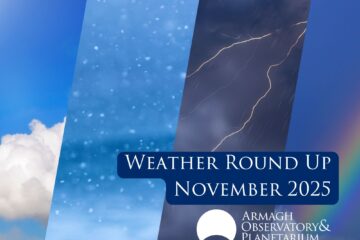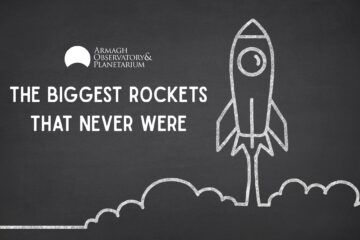As the summer draws to a close September is a perfect time for stargazing before the cold nights of winter finally creep in. With sunset around 9pm and a forecasted heatwave, fingers crossed for some clear skies with some lovely mild temperatures.
A key feature of the summer night sky is the famous asterism of the Summer Triangle. Despite being called the ‘summer’ triangle September is still a great time to view it. It will be visible in the south west from nightfall until just after midnight until the end of the month. The 3 stars that mark the triangle Altair, Deneb and Vega are recognised together as a large triangle in the night sky but all officially belong to their own constellations. Altair is the brightest star of Aquila the Eagle who is often pictured in the sky kidnapping Ganymede to be a slave for Zeus the king of the Gods. Vega marks the brightest star in Lyra, representing a lyre, a popular musical instrument in ancient Greek soirees. Deneb is the dimmest of the 3 stars but is the brightest star in Cygnus the Swan, in fact this is one of the most distant stars that you can see with the naked eye.
Moving into the autumn months and keeping with shape spotting in the stars, one of the key markers in the sky over the next few months is the Great Square of Pegasus. This square marks the belly of the magical flying horse Pegasus. According to mythology, Pegasus helped Perseus to rescue the maiden Andromeda from the terrifying sea creature Cetus. Andromeda is located right beside Pegasus in the night sky in fact the two constellations share a star, Alpha Andromedae or sometimes known as Alpheratz. This translated from Arabic means the navel of the mare, which is less appropriate for the head of a princess.

The Andromeda galaxy, on a collision course with the Milky Way but not for another billion years yet. Credit: ESA/Hubble & NASA
Located right beside the Andromeda constellation is the stunning Andromeda Galaxy. This is another member galaxy in our ‘local group’ of galaxies which also include our home galaxy the Milky Way. This is the most distant object that can be seen with the unaided eye it is a staggering 2.5 million light years away. However dark skies free of light pollution are needed for you to be able to view Andromeda with your eyes. Even when using an average telescope this huge star city only looks like a little fuzzy patch. However, stunning images captured by the Hubble Telescope reveal this stunning celestial masterpiece in all its glory. Data from NASA’s Chandra X-ray Observatory in 2013 also identified the Andromeda galaxy to have at least 26 black hole candidates. This is of particular interest to many astronomers as due to their gravitational pull Andromeda and our own Milky Way galaxy will collide. But not for a few billion years yet, so don’t panic! Also, it will be less of a collision more of a merger, the two galaxies becoming one larger galaxy. Also, the stars are so distant from one another they won’t actually collide, instead they will just integrate into a new galaxy structure.

The planets all in a pretty line in September 2017, but unfortunately during the day. Credit: Stellarium/Martina Glass
Unfortunately for planet gazing the next few months are pretty poor as all the planets are out during the day. The planets, the Sun and the Moon all follow the same path in the sky called the ecliptic. If we could see the planets in the daytime on the 23rd of September we would see Venus, Mars, Mercury, the Sun, Jupiter and the Moon all in a line. This would be quite a sight. However, as this is a fairly rare planetary alignment some people (with the power of the internet) are linking this celestial event with ‘prophesies’ discussed in the Bible and even some doomsday predictions. Many of these discussions are more closely linked with the world of astrology which does not have any scientific value. Conjunctions like this have happened in the past and will again in the future; despite being uncommon this is not a one of a kind event. Fingers crossed for us here in Northern Ireland that we might just about get to see the Sun that day!
The new Moon this month will be on the 20th of September and we will have a waxing gibbous Moon by the end of the month. If you have a telescope or even a pair of binoculars this phase of the moon is great for looking at the craters on the Moon. When there is a full moon it is too bright to view to see any detail whereas at the gibbous phase, along the terminator (that is the dividing line between the illuminated and dark parts of the moon) lots of craters and mare (“seas”) can be observed as the shadows highlights these features.
That is just a few of the highlights from the September sky. Fingers crossed for clear skies! Happy Stargazing.
Article by Martina Glass, Senior Education Support Officer





1 Comment
September Night Sky 2017 – MeasurementDataBases for Industry & Science · September 8, 2017 at 11:58
[…] Astronotes Astronotes: As the summer draws to a close September is a perfect time for stargazing before the […]